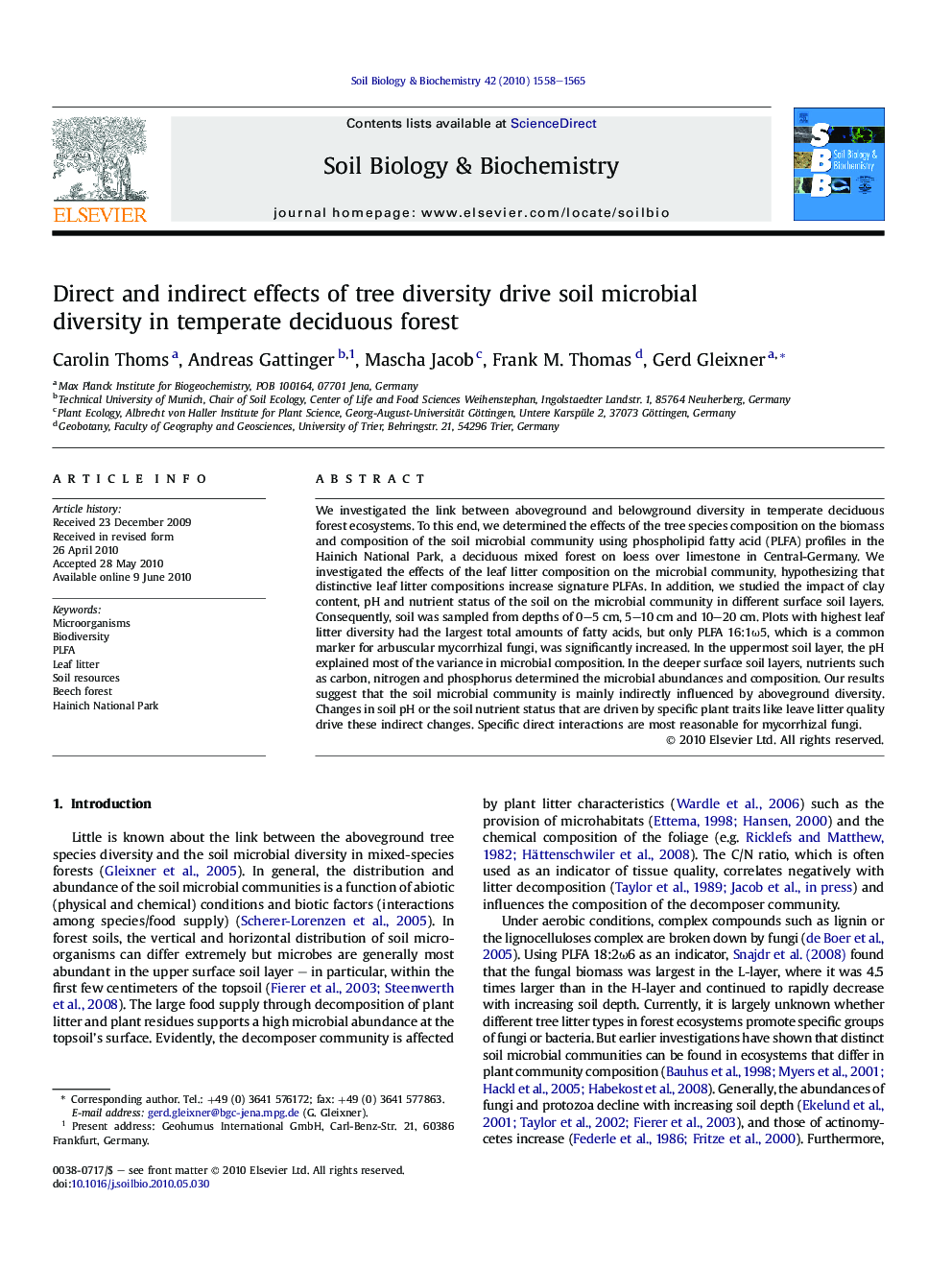| Article ID | Journal | Published Year | Pages | File Type |
|---|---|---|---|---|
| 10846125 | Soil Biology and Biochemistry | 2010 | 8 Pages |
Abstract
We investigated the link between aboveground and belowground diversity in temperate deciduous forest ecosystems. To this end, we determined the effects of the tree species composition on the biomass and composition of the soil microbial community using phospholipid fatty acid (PLFA) profiles in the Hainich National Park, a deciduous mixed forest on loess over limestone in Central-Germany. We investigated the effects of the leaf litter composition on the microbial community, hypothesizing that distinctive leaf litter compositions increase signature PLFAs. In addition, we studied the impact of clay content, pH and nutrient status of the soil on the microbial community in different surface soil layers. Consequently, soil was sampled from depths of 0-5Â cm, 5-10Â cm and 10-20Â cm. Plots with highest leaf litter diversity had the largest total amounts of fatty acids, but only PLFA 16:1Ï5, which is a common marker for arbuscular mycorrhizal fungi, was significantly increased. In the uppermost soil layer, the pH explained most of the variance in microbial composition. In the deeper surface soil layers, nutrients such as carbon, nitrogen and phosphorus determined the microbial abundances and composition. Our results suggest that the soil microbial community is mainly indirectly influenced by aboveground diversity. Changes in soil pH or the soil nutrient status that are driven by specific plant traits like leave litter quality drive these indirect changes. Specific direct interactions are most reasonable for mycorrhizal fungi.
Related Topics
Life Sciences
Agricultural and Biological Sciences
Soil Science
Authors
Carolin Thoms, Andreas Gattinger, Mascha Jacob, Frank M. Thomas, Gerd Gleixner,
